February 2017
How to achieve improved returns on shipping company activities
Speaker
Dr.h.c. (mult.) Peter Lorange

The Zurich Shipping Network aims to become the Swiss-based networking platform for maritime professionals and a local knowledge center for all matters related to shipping.

The ZSN community is an excellent opportunity to showcase your company and give back to the community.






Dr.h.c. (mult.) Peter Lorange

Capt. Amrit Singh

Roger M. Buergel

February 2017
How to achieve improved returns on shipping company activities
Speaker
Dr.h.c. (mult.) Peter Lorange

May 2017
US Sanctions – What are the likely developments vis-à-vis Russia, Iran and elsewhere under Trump administration
Speaker
Sarah Hunt

March 2017
Simplifying Shipping [Shipping Data & Trade Flows, Challenges & Solutions, Shipping Analytics]
Speaker
Capt. Amrit Singh
ZSN Maritime Drinks – A Sparkling Spring Gathering
The Zurich Shipping Network was delighted to host our Spring Networking Event, Maritime Drinks, generously supported by Wartmann Merker — our sincere thanks for making the evening possible.
Guests enjoyed a curated selection of maritime-themed wines, from Swiss sparkling with a nautical twist to the wine famously served during Ernesto Bertarelli’s America’s Cup victory in 2003.
Between sips of Pinot Noir and Blanc de Mer, the evening offered great conversations, new connections, and a lively exchange of ideas.
A warm thank you to all who attended. We look forward to many more moments like this within the ZSN community.
Swiss Flag event in Basel
On occasion of the recent Federal Council decision relaxing certain registration requirements to enable more ships to sail under the Swiss flag, we are delighted to invite you to an event in Basel hosted by the Swiss Maritime Navigation Office SMNO, Federal Department of Foreign Affairs FDFA, Directorate of International Law DIL.
Date: 26 November 2024
Location: Elisabethenstrasse 33, CH-4010 Basel CH
Summer cruise event on Lake Zurich
We are delighted to invite you to our summer networking event generously supported by DNV and White
Pearl Cruises.
We will enjoy a wonderful evening on Lake Zurich where drinks and snacks will be provided.
Date: 4 July 2024
Location: “Le Studio 45”, ZSG-pier Horgen
Marine insurance - Geopolitics and the road to Net Zero
ZSN are delighted to invite you to an event hosted by AXA XL and AXA Climate at their offices in Zurich.
Speakers:
Hanna Vinje, Hull and War Underwriter at AXA XL, London
James Thorne, Hull and War Underwriter at AXA XL, London
Date: 20 June 2024
Location: AXA XL, Limmatstrasse 250 (Brewery building), 8005 Zurich
SUSTAINABLE SHIP PROPUSLION
Please join us for this unique opportunity to meet and discuss Sustainable Ship Propulsion!
Speakers:
Christine Funck, CEO of Aquon One
Prof. Dr. Elimar Frank from OST
Martin Einsiedler, CTO of Shiptec AG
Date: 21 May 2024
Location: OST – Ostschweizer Fachhochschule, Campus Rapperswil
THE PORT OF ANTWERP-BRUGES AS ZURICH’S GATEWAY TO THE WORLD
The event is arranged to meet and discuss the supply chain challenges impacting the shipping industry and how the Port of Antwerp-Bruges is designing and progressing on its road map for sustainability
Speakers:
ElmarOckenfels, Senior Advisor and Port Representative Germany and Switzerland
Richard Schroeter, Port Representative Germany and Switzerland
Date: 10 April 2024
Location: Zunfthaus zur Zimmerleuten, Zurich
ZSN XMAS ‘23
ZSN is proud to connect the Swiss based passionate shipping professionals for the 9th year.
To catch up with old and new industry friends before winding down for Christmas! Join us on 30 Nov’23 at Werdmühleplatz to enjoy the Singing Tree, walk together to Munsterplatz, and then enjoy the XMAS market at Munsterplatz Zurich.
Date: 30 November 2023
Location: Werdmühleplatz, Zurich
2023 SUMMER DRINKS
Please join us for this unique opportunity to meet in person and discuss contemporaneous issues impacting the shipping industry.
We are delighted to announce the details of our informal, in-person, summer drinks social event.
We propose to spend some hours together outdoors, catching up on the first half of 2023.
Date: 26 June 2023
Location: Rimini Bar, Zurich
SWISS TONNAGE TAX & LUXURY YACHTING
Join us to get an overview of the Swiss legislative proposal for a tonnage tax system, and its comparative advantages to similar foreign tax regimes. Presented by Thomas Nabholz and Dragan Djukic of MLL.
Furthermore, our second topic is how Arketyp Yachts will "Changing the status quo in luxury yachting". Adriano Tinetto, CEO, and Brice Lemaire, Technical Advisor, will talk about the new yacht brand born in Switzerland from networking at ZSN.
Date: 9 May 2023
Location: Schiffbaustrasse 2, 8031 Zurich
FUTURE OF SUSTAINABLE PROPULSION SOLUTIONS
We are pleased to invite you to visit WinGD's premises to hear about their latest research and innovation advancements including their marine fuels testing laboratory.
WinGD, the former Wärtsilä Switzerland, will host a tour of their Engine Research & Innovation Centre and inform us about the future of sustainable propulsion solutions for merchant shipping.
Date: 15th March 2023
Location: WinGD, Winterthur
ZSN CHRISTMAS GATHERING 2022
ZSN are happy to catch up with you about the 2022 shipping market,
come and meet current and new friends in an open air Xmas market.
We will meet at Werdmühleplatz to enjoy the Singing Tree, walk
together to Munsterplatz, and then enjoy the Christmas market at
Munsterplatz.
Venue: Werdmühleplatz / Munsterplatz
Assessing the sanctions battlefield
SPNI the international shipping professional network
supported by the chapters in London (SPNL), Zurich (ZSN)
Hamburg (SPNH) and Mumbai (SPNM), in collaboration with
HFW law firm would like to invite you to their Sanctions Webinar.
Speaker: Sarah Hunt
Occupation: Partner HFW
Speaker: Daniel Martin
Occupation: Partner HFW
Venue: Webinar
ZSN XMAS 2021
ZSN are happy to catch up with you about the 2021 shipping market,
come and meet current and new friends in an open air Xmas market.
We will meet at Werdmühleplatz to enjoy the Singing Tree, walk
together to Munsterplatz, and then enjoy the Christmas market at
Munsterplatz.
Venue: Werdmühleplatz / Munsterplatz
Assessing the sanctions battlefield
SPNI the international shipping professional network
supported by the chapters in London (SPNL), Zurich (ZSN)
Hamburg (SPNH) and Mumbai (SPNM), in collaboration with
HFW law firm would like to invite you to their Sanctions Webinar.
Speaker: Sarah Hunt
Occupation: Partner HFW
Speaker: Daniel Martin
Occupation: Partner HFW
Venue: Webinar
The Suez Canal: The Impact of Delays
Force Majeur & Covid 19
Join us to attend 2 presentations about the latest issues in Maritime law
Speaker: Caroline West
Occupation: Senior Associate HFW
Speaker: Sarah Hunt & Patrick Myers
Occupation: Partners HFW
Venue: Event Space Bogen - Zurich
The role of data & analytics in maritime safety and sustainability
Meet shipping fellows in Zurich, Cape Town, Hamburg and Mumbai. Featuring a talk by Martin Crawford-Brunt Former CEO of RightShip.
Venue: Online
ZSN Zurich Shipping Network
Networking event online
Let's meet on wonder room : ZSN
Pass : UPON REDISTRATION
WED 9th December @ 18:30 CET
RSVP : zurich@shippingnetwork.co.uk
"A Ship Will Not Come"
Join us on 11th March for an exclusive presentation about the centrepiece of the current exhibition the Swiss flagged merchant vessel MS Basilea.
Speaker: Roger M. Buergel
Occupation: Johan Jacob Museum Director
Venue / Sponsor: Johan Jacob Museum Zurich / No Host
“Stena Bulk - LNG”
Expert from Stena Bulk will give ZSN audiences an overview about the technical, commercial and market trends of the often complex world of LNG shipping.
Speaker: Göran Hermansson
Occupation: General Manager Stena Bulk LNG
Venue / Sponsor: Impact Hub Zurich / Stena Maritime
ZSN members are invited by WISTA Switzerland to attend an interesting conference in Zug, on the 12th September 2019.
The Return of Sail
Speaker: Jorne Langelaan – EcoClipper
Latest Review of Maritime Transport
Speaker: Luisa Rodriguez – UNCTAD
"ZSN Summer Event ‘19 "
ZSN is hosting its second Summer Event on the 5th September ’19 and welcoming everyone with an interest in shipping.
Venue: Barfussba
“Shipyard visit: Shiptec, Luzern”
ZSN is pleased to host it's second event of 2019 held in collaboration with the Shipyard Shiptec in Luzern.
Speaker : Jonas Panacek , Panacek Yacht Design & Engineering GmbH
Speaker: Martin Einsiedler, Head of Naval Architecture & Engineering of Shiptec AG
Venue / Sponsor : Shiptec Luzern
“Shipping Strategy”
ZSN is glad to host it's first event of 2019 held in collaboration with the Lugano based ship owner Nova Marine Carriers SA.
Speaker : Vincenzo Romeo di Santillo
Occupation : CEO Nova Marine Carriers SA
Venue / Sponsor : Haus Appenzell / Nova Marine Carriers SA
“New technologies in shipping & new trading patterns: What to expect in the future?”
Speaker : Despina Theodosiou
Occupation : WISTA International President & Totothe Maritime CEO
Speaker : Gaukhar Nurgalieva
Occupation : Head of Eurasian Studies Lab, Skilkovo School of Management
Venue / Sponsor : Parhotel Zug / WISTA [Women’s International Shipping and Trading Association]
‘‘ZSN CHRISTMAS PARTY 2018’”
ZSN is gladly hosting it’s Christmas Party to bring its loyal attendees, guests and friends and celebrate together an intriguing year for the shipping industry. Let us share a drink while exchanging some thoughts and ideas!
Venue / Sponsor : Zürich Christmas Village / SSY Zug
“ZSN SUMMER EVENT "
ZSN is hosting it’s first Summer Event on the 26th July 18 and welcoming everyone with an interest in shipping. This is a networking event targeted at people who are involved in the shipping industry and based in the wider Zurich-Zug area.
Venue: Rimini Bar
“Charterer’s Protective Agency”
Speaker : Denzyl Allwright
Occupation : Head of IndoChina region – Wallem
Speaker : Tomas Langgård
Occupation : Business Development Manager Europe – Wallem
Venue / Sponsor : Hochschule Luzern / Wallem Group
““Taurus v SOMO”
An interactive case study covering Shipping, Trading & Banking issues”
Speaker : Sarah Hunt
Occupation : Partner HFW Geneva
Speaker : Jeremy Davies
Occupation : Partner HFW Geneva
Venue / Sponsor : Glockenhof Zurich / HFW Geneva
“Bosphorus – A Virtual Tour”
Speaker : Altay Semih
Occupation : Ships Agency Service Manager
Venue / Sponsor : Schellenberg Wittmer Ltd / WILHELMSEN SHIPS SERVICE (WSS)
“Port of Basel”
Speaker : Rene Maegli
Occupation : Managing Director and Founder of MSC Basel
Venue / Sponsor :
Port of Basel / Mediterranean Shipping Company (MSC)
“History and Present of Global Trade Routes”
Speaker : Roger M. Buergel
Occupation : Director Johann Jacobs Museum
Venue / Sponsor : Johann Jacobs Museum / Wallem Group & Johann Jacobs Museum
“Unmanned Vessels”
Speaker : Janine Heinicke
Occupation : HR Director - DNV GL Maritime
Speaker : Stine Mundal
Occupation : Head of Section for Environmental Certification - DNV GL Maritime
Venue / Sponsor :
Parhotel Zug / WISTA [Women’s International Shipping and Trading Association]
“Simplifying Shipping”
Speaker : Amrit Singh
Occupation : Lead Shipping Analyst - Thomson Reuters
Venue / Sponsor : Thomson Reuters Baar]
“How to achieve improved returns on shipping company activities”
Speaker : Prof. Dr. Peter Lorange
Occupation : Founder and Chairman at Lorange Network
Venue / Sponsor : Schellenberg Wittmer Ltd
“Shipping Finance”
Speaker : Athanasios Koilakos
Occupation : Head of Credit and Transaction - ITF Suisse
Venue / Sponsor : International Transport Finance Suisse (ITF Suisse) / Stena Maritime AG
“Modern Propulsion Solution for Merchant Shipping”
Speaker : Winterthur Gas & Diesel (WinGD)
Venue / Sponsor : Winterthur Gas & Diesel (WinGD) / Holman Fenwick Willan LLP
“Shipping Networking Drinks in Zurich”
Venue : Oskar Kowalski Bar in Zurich
“Shipping Networking Drinks in Zurich”
Venue : Oskar Kowalski Bar in Zurich
“Shipping Networking Drinks in Zug”
Venue : Pier 41 in Zug
“Shipping Networking Drinks in Zurich”
Venue : Simplon Bar in Zurich
“Shipping Networking Drinks in Zurich”
Venue : Simplon Bar in Zurich
“Shipping Networking Drinks in Zurich”
Venue : Simplon Bar in Zurich
“First Shipping Networking Drinks in Zurich”
Venue : Neo Zurich